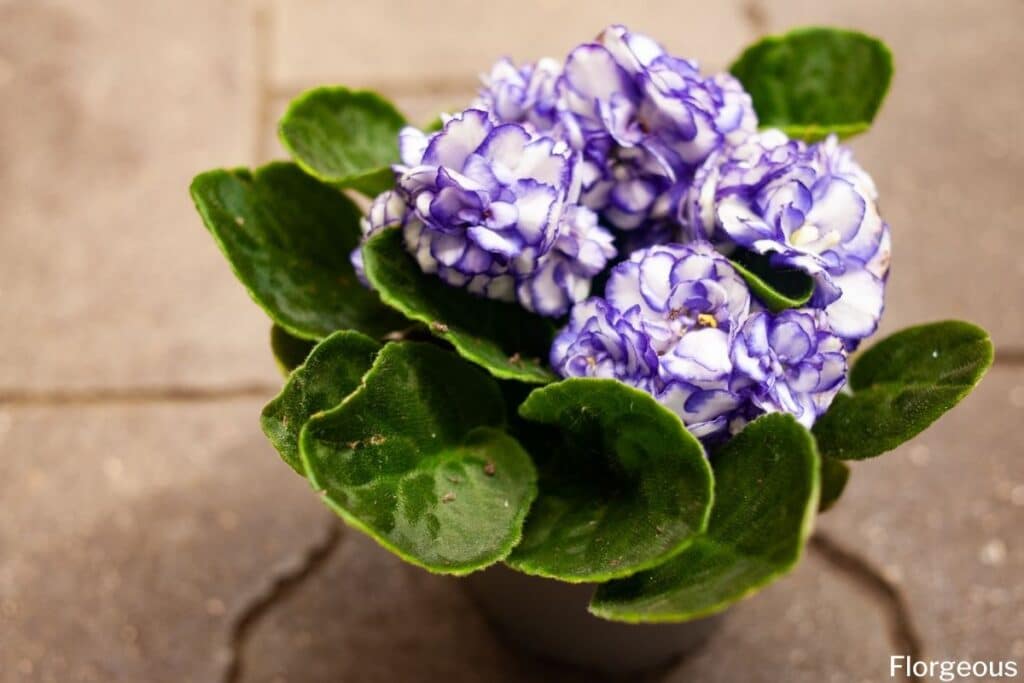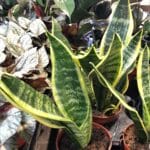Same with humans, plants can get sick too. But no one wants a sick houseplant. People prefer beautiful luscious plants in their homes, especially with African violets (Saintpaulia).
Although, there are times when your plants get insect pests and diseases. No need to panic, read on to know how to take care of African violets and what to do to save your plants.
Most Common African Violet Insect Pests
Mealybugs
Mealybugs are common landscape pests. For the African violet, the Cornstock mealybug and citrus mealybug are the more prominent ones. They are small sicking insects with a waxy white outer layer. You can see them in between nodes and the undersides of african violet leaves.
If left unchecked on infected plants, mealybugs will feast on the African violet’s sap, causing leaves to become deformed and stunted. In severe cases, the plant will appear sticky due to a sugary substance the mealybugs excrete as they feed. This sticky residue, combined with the sap loss, can weaken the plant significantly and even lead to death.
To avoid mealybugs, perform a regular checkup for all your plants. Look at the underside of pots for insect eggs. If you did see them, use a cotton swab or a tissue and rubbing alcohol to wipe it off.
When an infestation occurs, use insecticides with active ingredients such as permethrin, imidacloprid, acetamiprid, and cyfluthrin. Read the product label for the recommended rates and frequency of application as it varies depending on the product.
Cyclamen Mites
Although mites are more related to arachnids than insects, it is one of the prominent pests for African violets. Mites reproduce fast in humid and warm temperatures. Also, they survive by sucking plant juices and injecting harmful toxins. This leads to stunted and damaged young leaves and flowers, and leaf curling, which are the common signs of a mite infestation.
The best way to control is by avoiding overcrowding of african violet plants. This is done by providing enough space between each plant. If infested plants are not heavily damaged, they may be isolated and treated with insecticidal soaps.
However, the Saintpaulia plant should be removed when the infestation caused too much damage to the plant. Do not reuse the pots from the badly infested plants right away. Wash and sanitize them first by soaking them in a diluted bleach solution for at least 30 minutes. Prepare the solution by following this proportion, 1 bleach: 9 water.
Most Common African Violet Diseases
Botrytis Blight
The causal organism for this disease is a fungus, Botrytis cinerea. When the plant is infected, the underside of the leaves will have watery cuts at the beginning. As the disease becomes worse, blighting of stems, leaves, and flowers will occur. It also turns dark brown or gray with pustules.
Fungal plant diseases have no known cure. It can only be prevented with the use of fungicides. The best way to deal with the botrytis blight is by removing the infected parts and doing some modifications in the environment. Provide proper ventilation for the plant and avoid leaving it too wet. Also, check for mites as the fungal disease happens along with mite infestations.
Root and Crown Rot
Another fungal disease common in African violets is root and crown rot. It is caused by Phytophthora or Pythium species. It makes the root and the crown soft as if it is slowly decaying. Young leaves are smaller and die, while mature leaves turn wilts. This fungal rot is caused by having too much soil moisture or improper planting, wherein the plant is planted too deeply.
There is no way to save the Saintpaulia plant from this disease. The best way is to eradicate the entire plant. To prevent this from happening again, follow proper soil sterilization techniques and use clean pots. Also, follow the proper planting and watering practices to avoid root rot in your plant.
Prevention is Better Than Cure
Plant problems do not magically appear. They are there because something or someone brought them there. It may be caused by using a gardening tool used for tending an infected plant or using a growing medium that is not sterilized.
To prevent this from happening, the best thing to do is to use clean and sterilized gardening tools and materials. Make it a habit to clean the tools after use and perform regular check-ups on your healthy plants.
Other Common African Violet Problems
Not all problems are caused by insects or pathogens. Sometimes, it is caused by mishandling the African violets. Here are some problems that occur when the requirements are not met:
Water Spots
When you see white or yellow spots on the leaves, that is caused by stagnant water on the leaf surface. This happens in colder environments wherein evaporation is less. To avoid this from happening, remember to remove any excess moisture on the leaves.
Inability to Bloom
Nobody wants an African violet that doesn’t bloom. Its flowers are the main attraction. Sometimes the flower buds do not develop properly due to cold temperatures, too much soil moisture, the air being too dry, and bad soil drainage. Follow the proper growing requirements to avoid this from happening.
Petiole Rot
Established African violets tend to be denser. The stems might touch the rim of planter pots and turn reddish-brown. This discoloration of the petioles is caused by the salt build-up on the container rims, which can affect African violets.
To avoid this, apply the right amounts of fertilizer and avoid overfertilization. Also, check the water source as it may contain salts and other trace elements harmful to plants. Some put tape on the rim, while others flush out the salts by supplying large amounts of water.
FAQs
What does fungus look like on African violets?
Fungus on African violets typically appears as powdery white or gray patches on the leaves or stems. It may also cause the affected areas to become discolored or rot.
What do mites on African violets look like?
Mites on African violets are tiny arachnids that may appear as tiny specks moving on the leaves or webs between leaves. They can cause stippling or yellowing of the foliage and may be visible with a magnifying glass.
How do you fix a sick African violet?
To fix a sick African violet, assess the plant’s environment for factors like inadequate light, improper watering, pests, or disease. Adjust care practices accordingly, such as providing proper lighting, watering correctly, and treating for pests or disease as needed.
What does anthracnose fungus look like?
Anthracnose fungus on African violets typically manifests as small, dark lesions or spots on the leaves. These spots may enlarge over time and may have a sunken appearance. Fungal spores may also be present on the lesions.







